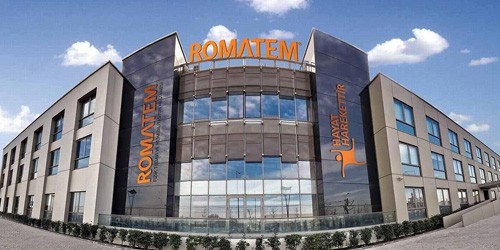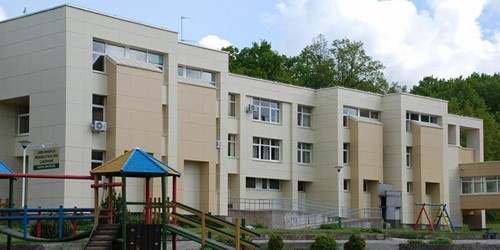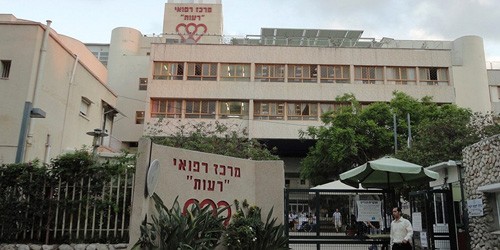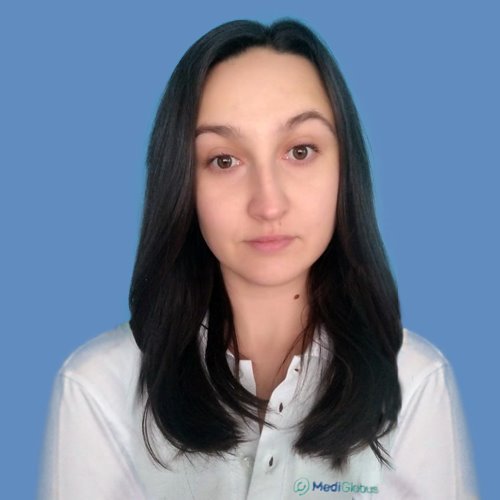1. Recovery from a heart attack |
2. Stages of treatment after a heart attack |
3. Rehabilitation programme |
4. Duration of rehabilitation therapy |
5. Sanatorium after a heart attack |
Cardiac rehabilitation is an essential part of successful recovery from a myocardial infarction. It helps to get you back to an active life and reduces the risk of another heart attack happening. Find out what cardiologists advise you to do to recover as quickly as possible, what rehabilitation programme includes and how effective it is in this article.
Listen to the article:
Heart attack: consequences and rehabilitation
Myocardial infarction, also known as a heart attack, is a life-threatening condition. It is an acute disruption of the blood supply to the heart muscle with subsequent damage to the heart. The condition is caused by blockage of one or more of the coronary arteries. Without treatment, around 40% of cases are fatal.
The classic symptoms of myocardial infarction are sharp chest pain and breathlessness. However, the signs of the disease can be very different. In women, they are more likely to differ from the “classic” picture, making them more likely to remain undetected.
The most common manifestations of a heart attack are considered to be:
tightness in the chest;
pain radiating to back, jaw, arm, collarbone;
cold sweat;;
nausea and vomiting;
dizziness,
palpitations;
feelings of restlessness and fear;
fainting.
A heart attack requires immediate treatment. Most therapies are provided in the emergency department. Hospital treatment may also include medication to remove blood clots, reduce pain or slow the heart rate.

Minimally invasive surgery, in particular percutaneous coronary stenting, can be performed. This procedure will unblock the vessel and restore normal blood flow to the heart.
The chances of recovery after a heart attack depend on how badly the heart is damaged and how quickly the patient receives emergency treatment. The earlier treatment begins, the greater the chance of survival.
Myocardial infarction rehabilitation helps to regain strength and independence and overcome anxiety and fears. Everyone who has had a heart attack needs rehabilitation. It plays a crucial role in the physical and emotional health of the patient.
Abroad, rehabilitation programmes are developed individually for each patient. This involves a team of different specialists: cardiologist, rehabilitation therapist, physiotherapist, occupational therapist, nutritionist, psychiatrist or psychologist, social worker, etc. Initially, a medical assessment of the physical and psychological condition of the patient is carried out, and risk factors for a second attack are identified. Based on the findings, cardiac rehabilitation and supportive therapy plan is created.
You can get a rehabilitation programme abroad by contacting the coordinating doctors of the international medical platform MediGlobus. Click on the button below and leave your contact details.
Stages of rehabilitation after a myocardial infarction
Rehabilitation after a myocardial infarction comes in three stages:
Stationary | This period lasts between 7 and 20 days. It includes an inpatient stay and medication therapy, which is adjusted as necessary. During this time, primary rehabilitation is provided and the focus is on primary physical skills restoration. |
Inpatient-outpatient | Lasts about six months. During this period the patient’s condition stabilises. Depending on the needs and abilities, this stage of recovery can take place either at home, in a sanatorium or in a rehabilitation centre. |
Supportive | Lifelong preventive care to minimise recurrence and follow-up care with periodic check-ups with the doctor and tests to monitor the condition (ECG, ECHO, laboratory tests). |
Recovery from a heart attack is a long-term process that also involves changes in various aspects of the patient’s life. These include organising a normal daily routine, avoiding bad habits, eating a healthy diet, staying physically active and working on your mental health.
Components of rehabilitation after a heart attack
The American Heart Association and the American College of Cardiology recommend cardiac rehabilitation programmes as the most effective recovery for stroke patients. The main components of rehabilitation after a heart attack include:
physiotherapy, exercise therapy, massage and chiropractic care,
medication therapy,
nutritional therapy,
psychological rehabilitation.
Most rehabilitation programmes last about 3 months and sometimes longer. Some patients receive intensive rehabilitation in 1-2 weeks. It involves doing different rehabilitation procedures every day for several hours.
Physiotherapy for myocardial infarction
The role of physiotherapy, physical therapy and other rehabilitation methods should not be underestimated. They improve the general health of the patient. Physiotherapy treatments such as these are indicated during the recovery period after a heart attack:
hydrotherapy – the use of sulphur, carbon dioxide or radon baths with the addition of iodine;
galvanic therapy – low-voltage, low-intensity electrical current applied to the cardiovascular system to improve blood flow;
laser therapy – used in the acute and subacute periods of myocardial infarction, it improves haemodynamic indicators and increases patients’ resistance to physical activity;
magnetotherapy – exposure of the heart and blood vessels to a magnetic field that helps soothe pain and inflammation and relieves myocardial strain;
oxygen therapy – oxygen inhalation to reduce acute ischaemic damage and reduce areas of myocardial necrosis;
electrophoresis – relieves inflammation and swelling by improving oxygenation of cardiac tissue.
Good nutrition for the heart and a healthy lifestyle
The American Heart Association and the American College of Cardiology’s Lifestyle Management Guidelines encourage people who have had a heart attack to eat a healthy diet. It involves:
Reducing the amount of saturated fats and trans fats,
Increasing the amount of fruit and vegetables,
Replacing animal protein with vegetable protein,
Limiting consumption of simple carbohydrates (sweets, white bread),
Eating in small portions,
Drinking enough fluids.

The rehabilitation period involves completely avoiding alcohol and smoking. Abuse of alcohol can provoke spasms of the heart muscle, disturb the heart rhythm and cause another heart attack. Smoking is also contraindicated. Nicotine markedly increases the chance of coronary heart disease and heart attack.
Smoking cessation quickly reduces these risks. One year after quitting cigarettes, the risk of death from coronary heart disease is reduced by about half, and after 2 this figure falls to the level of a non-smoker.
Abroad, cardiac rehabilitation programmes include treatment to help you stop smoking. These are individual and group smoking cessation programmes.
Physical activity
The cardiovascular system improves significantly with moderate physical activity. Anyone who has had a stroke can exercise safely at home. However, to correctly calculate the intensity and duration of exercise, the help of an exercise therapist is needed. They will assess the patient’s health, determine the risks of complications from exercise and develop a personal exercise programme.
An exercise programme takes into account the level of fitness of the patient, the health of the heart, the actual physical limitations, and the amount and intensity of exercise needed to improve myocardial function.
The recommended frequency of exercise is 3-5 times a week. Each session consists of a warm-up (5-10 minutes), basic exercises (20 minutes) and a “cool-down” phase (5-10 minutes).
After a heart attack, the patient should have aerobic exercises that involve large muscle groups. Jogging, swimming and cycling are ideal.
Walking 3-4 km at least twice a week and climbing stairs are also recommended.

Medication therapy
More than 98% of heart attack patients take several medicines for a long time. These medicines prevent a repeat heart attack, relieve symptoms and prolong survival. They include:
blood-thinning drugs,
antiplatelet drugs,
inhibitors to reduce blood pressure and reduce the area of myocardial damage from a heart attack,
nitrates to dilate coronary blood vessels and prevent chest pain,
beta-blockers to slow the heart rate,
statins to reduce harmful cholesterol levels and prevent a second heart attack or stroke.
Psychological support

Depression, irritability, fear and anxiety are common after a heart attack. This is particularly true for young people. These conditions make it difficult to exercise, reduce energy levels, cause fatigue and harm one’s quality of life. Psychological problems affect the patient’s relationships and work.
To prevent the situation from getting worse, individual or group therapy, as well as medication, are recommended. Treatment of depression and anxiety can improve the long-term prospects of managing a heart attack and the patient’s general well-being.
Psychological rehabilitation techniques such as meditation, relaxation and holistic approaches are important to relieve stress in patients after a heart attack. They increase the effectiveness of recovery and are therefore often used as an adjunct to traditional medical therapy and cardiac rehabilitation.
Timing of rehabilitation after a heart attack
Rehabilitation time after a heart attack varies for each patient. It depends on many factors, the key ones being the age and general health of the patient, the severity of the heart attack, and the speed of first aid.
On average, the length of intensive rehabilitation treatment takes about 2-3 weeks. It may take more than a year for the body to fully or as fully as possible rehabilitate itself. However, after a heart attack, patients need lifelong supportive therapy.
Treatment centres for patients after a myocardial infarction
Ideally, people who have had a heart attack should be treated in a sanatorium. Specialised clinics provide patients with various methods of recovery, such as robotic rehabilitation, multisensory stimulation and magnetic therapy. Treatment in such clinics provides a more complete recovery. The leading institutions in this field are:
Resume
Myocardial infarction is an acute disruption of blood flow in the heart muscle that is caused by abnormalities in the coronary arteries. More than 1.5 million cases are diagnosed worldwide each year. Men are twice as likely to suffer from it as women.
Rehabilitation after a myocardial infarction is a long process that requires significant changes in the patient’s life. It involves fixing the diet, physical activity, taking medication, etc. However, these measures help to reduce the risk of another heart attack and death and allow the person to lead an active life.
Full cardiac rehabilitation after a stroke is the main measure for preventing a recurrence. The length of the recovery programme depends on the severity of the pathology, the promptness of first aid and the general health of the patient. It usually takes 3 weeks to recover, and the whole rehabilitation process can take up to a year. Supportive therapy is needed throughout life.
The leading heart attack rehabilitation centres are in Turkey, Israel and Lithuania. These are the Romatem, Reut, Abromiskes and Nobel clinics.
To book an appointment for heart attack rehabilitation and stenting at one of the best clinics abroad, leave your request on our website. We will organise your medical trip as soon as possible.
Sources:
- The American College of Cardiology
- The American Heart Association’s
- British Heart Foundation
- AHA/ASA Journals









